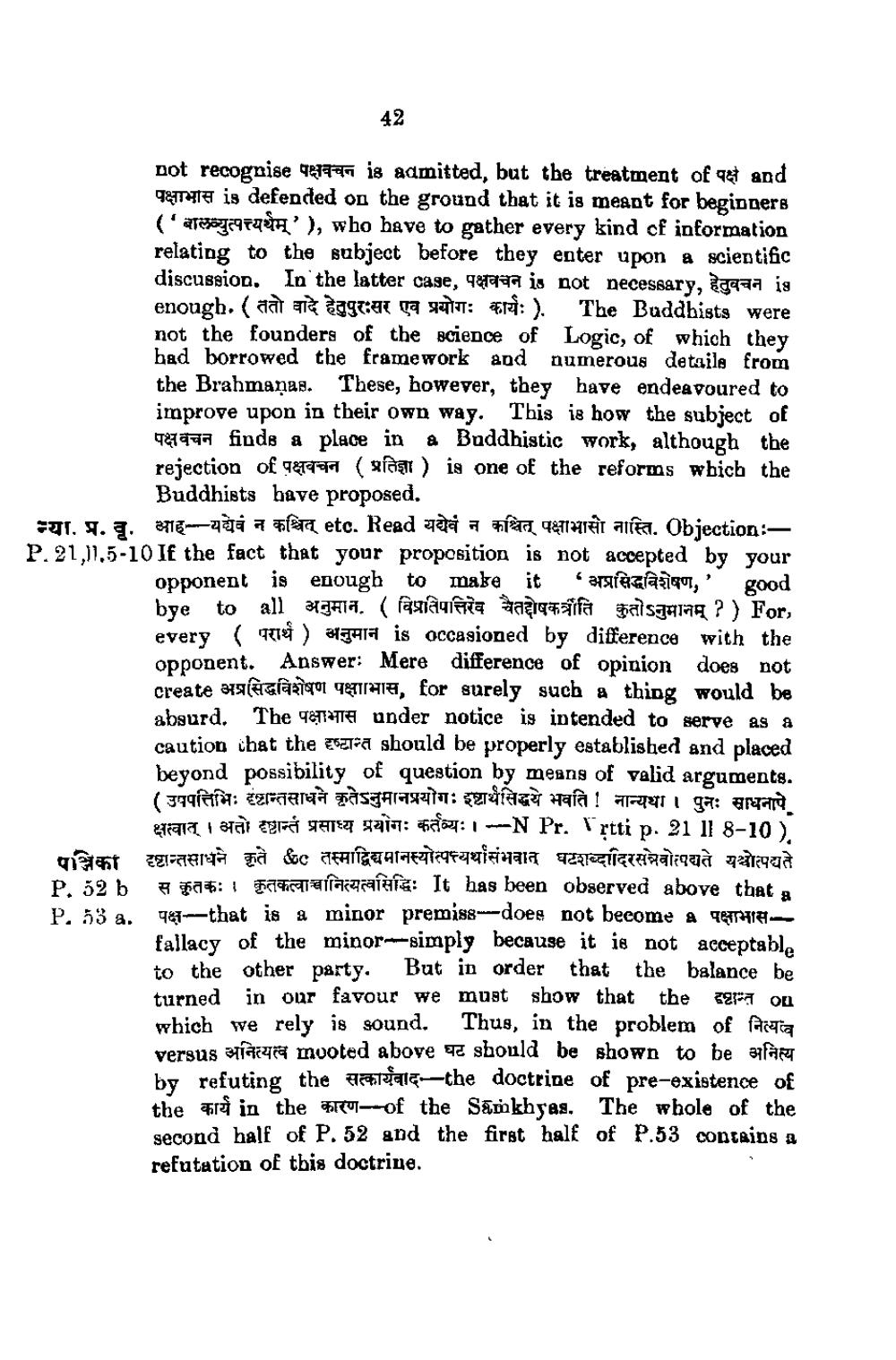________________
42
not recognise it is admitted, but the treatment of and q is defended on the ground that it is meant for beginners ('Totem para' ), who have to gather every kind of information relating to the subject before they enter upon a scientific discussion. In the latter case, 48799 is not necessary, dana ig enough. (aata aagt:at ga xat: 7:). The Buddhists were not the founders of the science of Logic, of which they bad borrowed the framework and numerous details from the Brahmaņas. These, however, they have endeavoured to improve upon in their own way. This is how the subject of 94977 finds a place in a Buddhistic work, although the rejection of पक्षवचन (प्रतिज्ञा ) is one of the reforms which the
Buddhists have proposed. 01. 4. q. 1 a fer etc. Read 9 a 4877 TÊN Anta. Objection:P. 21.11.5-10 If the fact that your proposition is not accepted by your
opponent is enough to make it a halaq, good bye to all agaia. (fananifaa aaea aifa gaisgamna ?) For, every ( परार्थ ) अनुमान is occasioned by difference with the opponent. Answer: Mere difference of opinion does not create thglasierot 781418, for surely such a thing would be absurd. The qe under notice is intended to serve as a caution what the cosa should be properly established and placed beyond possibility of question by means of valid arguments. । उपपत्तिभिः दृष्टान्तसाधने कृतेऽनुमानप्रयोगः इष्टार्थसिद्धये भवति ! नान्यथा । पुनः साधनापे
cart 1 ta ar TETET 1919: 5:1-N Pr. Pitti p. 21 11 8-10). पत्रिका दृष्टान्तसाधने कृते &c तस्माद्विद्यमानस्योत्पत्त्यर्थासंभवात् घटशब्दादिरसन्नवोत्पद्यते यथोत्पद्यते P. 52 b $a$:! fichanallazzaitis: It has been observed above that a P. 53 a. 981--that is a minor premisa---doee not beeome A -
fallacy of the minor simply because it is not acceptable to the other party. But in order that the balance be turned in our favour we must show that the 577 on which we rely is sound. Thus, in the problem of factia versus अनित्यत्व mooted above घट should be shown to be अनित्य by refuting the file--the doctrine of pre-existence of ther in the of the Samkhyag. The whole of the second half of P. 52 and the first half of P.53 contains a refutation of this doctrine.




